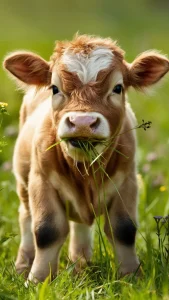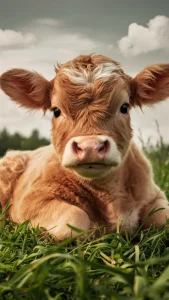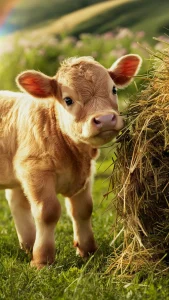Have you been dreaming of having your own milk cow to supply your homestead with fresh dairy products? Raising cows can seem like an intimidating endeavor if you’ve never done it before, but it’s actually quite manageable for beginners to raise a cow or two.
In this guide, I’ll break down the basics of getting started with cow raising so you can enjoy homemade milk, butter, cheese, and more.
One of the first decisions to make is whether you want to raise dairy cows or beef cattle. Dairy cows, like Holsteins, are bred specifically for milk production and will need to be milked daily. Beef cattle, like Herefords, are raised primarily for meat. As beginners, I’d recommend starting with a dairy breed since you’ll get the added benefit of fresh milk. Later on, you could look at adding a beef calf to raise for your freezer.
You’ll need adequate pasture space for your cow(s) to graze. Aim for at least an acre of fenced-in pasture per cow. Make sure the fence is sturdy; cows can be quite determined to get out! Provide grass hay for winter feeding when the pasture isn’t growing. A three-sided shelter with an open front facing away from prevailing winds will give your cow protection from the elements.
For housing, you can use an existing barn or construct a simple, three-walled shelter. Be sure to cover it with straw and clean it regularly to keep things dry and draft-free. You’ll also need a sturdy stall or free-stall area for milking, grooming, and medical care. Provide fresh water in the pasture and housing area at all times.
You’ll also need a fenced pasture area—plan for 1-2 acres per cow for grazing. Fences must be very sturdy to contain cows.
When you’re ready to get your first cow, consider starting with a family cow that has already had her first calf. This allows you to skip the difficult first-calf heifer stage. Look for a healthy, friendly 3-5-year-old cow that’s been raised in similar conditions to yours. A veterinarian should examine any new cow before bringing her home to ensure she’s disease-free.

Ask the previous owner about the cow’s production, health history, temperament, and feeding regimen so you can keep things consistent at first. Plan to quarantine new cows separately for 30 days to monitor for illness before joining the herd. You’ll need a trailer or large stock trailer to bring her home safely.
For milking, you’ll need a sturdy stanchion or head gate, a milking stand, and a bucket or bulk tank. Make sure to learn proper milking techniques to avoid injury or mastitis. Milk your cow completely by hand twice a day at first until you’re comfortable with her routine.
Always milk in the same order to establish the pecking order and keep things calm.
Be sure to keep accurate production records, including the cow’s name, date, quantity of milk, any health issues, and breeding or caving details. This information is invaluable for monitoring her productivity over time. Have your veterinarian test milk quality regularly as well.

Cows need a balanced diet to thrive. In addition to pasture, provide quality hay and a small grain ration balanced for your cow’s stage of production. Supplement with a mineral/vitamin mix designed for dairy cattle as well.
Clean, fresh water should always be available. Monitor your cow’s body condition and adjust her feed intake accordingly.
Cows drink a lot of water; expect each one to need 15–30 gallons per day. Secure a reliable water source, like a trough.
Speaking of production stages, be sure to rebreed your cow 60–90 days after calving to maintain her milking cycle. Most dairy cows will calve annually. The gestation period is 9 months, so plan for her next calving by keeping breeding and calving dates recorded.
Calving can be tricky for beginners, so have your vet’s number handy just in case.

Final Thoughts
With regular milking, feeding, pasture rotation, and health care, your homestead cow will provide you with all the fresh dairy products you need
Be sure to enjoy the bonding experience of caring for your gentle bovine friend each day as well. Let me know if you have any other cow-raising questions!
